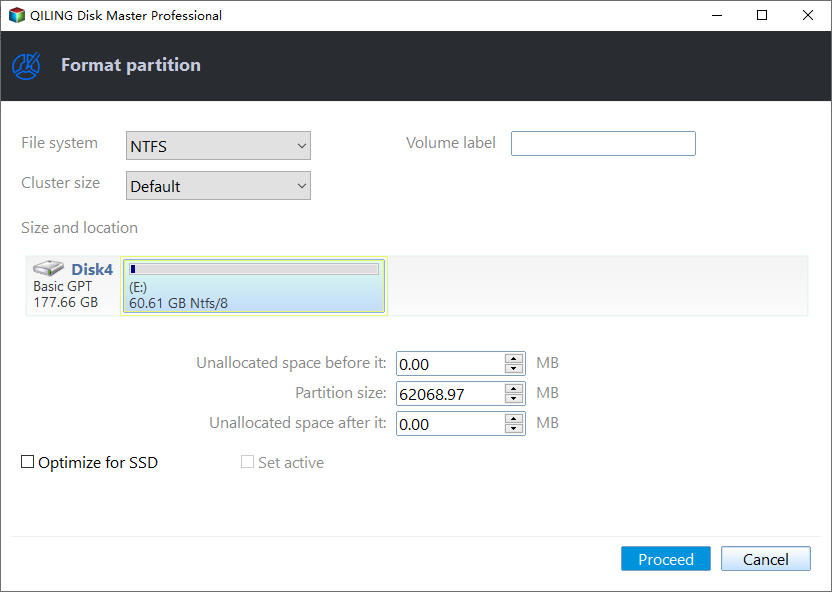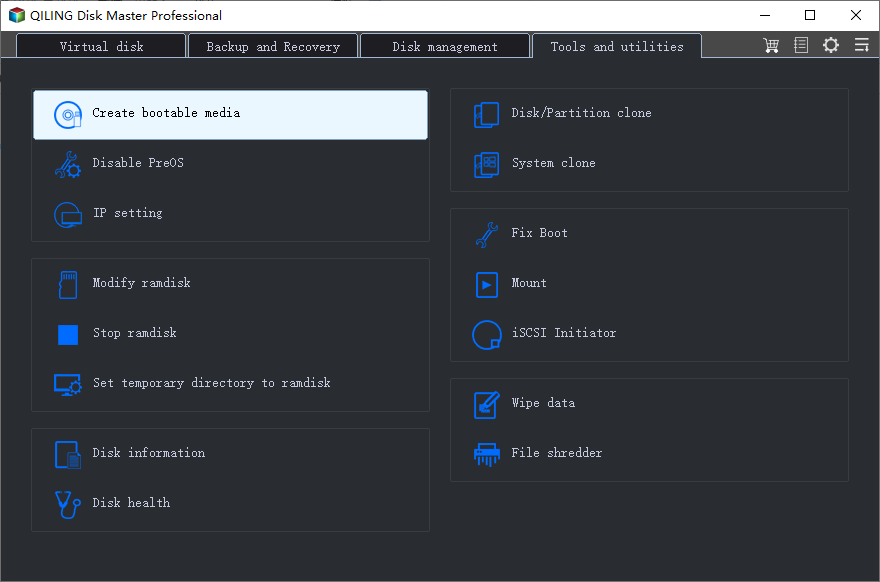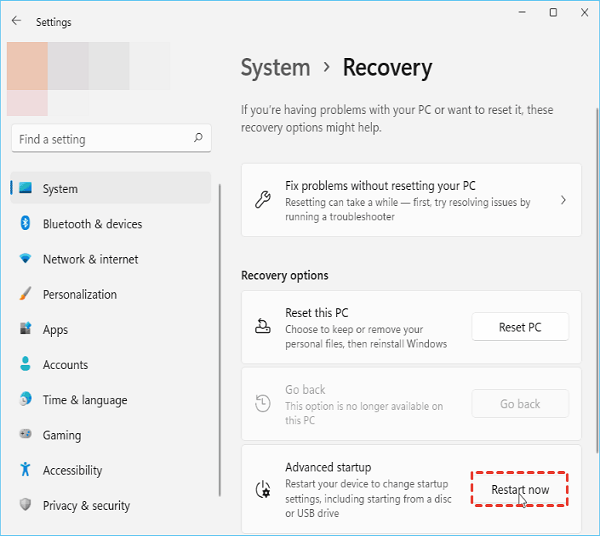How to Boot Windows 10 from USB Flash Drive
Are you looking for a detailed step-by-step to boot Windows 10 from USB and install Windows from USB? You have come to the right place! Qiling can solve all the possibilities you want to boot from USB:
- Case 1. The current PC is an old system, such as Windows 7, and you want to load and run your latest Windows system via USB.
- Case 2. When your Windows system crashes or encounters a serious system error, booting Windows 10 from USB will allow you to reinstall system or perform troubleshooting.
This article will provide detailed solutions no matter why you want to boot Windows 10 from USB.
| ⏱️Duration | 5-7minutes |
| 🧑💻Apply to |
Boot Windows 10 from USB: ✔️ To create bootable USB to install Windows or fix Windows boot issues ✔️ To run the same configuration of Windows 10 on different devices |
| 🚩Required Tools |
|
| ✍️Steps |
1️⃣Preparations |
Stage 1. Preparations Before Booting Windows 10 from USB
When you want to boot Windows 10 from USB, you need to prepare the right tools and devices:
1. Prepare a USB with at least 16GB of free space to create a bootable USB. And format it in FAT32:
There are specific format requirements for creating a bootable USB. For a quick and safe method, use Qiling Disk Master Professional - a reliable and professional formatting tool to format USB larger than 32GB to FAT32 (Windows built-in tools do not support this operation.)
Step 1. After downloading and launching Qiling Disk Master, right-click on the target partition on the USB and select "Format."
Step 2. Select Partition Label, FAT32 File System, and Cluster Size and click OK.

Step 3. Acknowledge the warning window and click "Execute 1 Task" to apply the formatting requirement.
2. Download Windows 10 ISO File: When you create bootable USB, you need to burn the Windows ISO file on the USB.
Step 1. Open: https://www.microsoft.com/en-us/software-download/windows10
Step 2. Click Download Now and download the ISO file.
Stage 2. Create a Bootable USB
You have two ways to create a bootable USB:
1. Use Qiling Disk Master to create bootable installation media:
Qiling Disk Master is one of the best ISO burner that provides the Burn ISO feature to allow users to create bootable Windows USB. It simplifies the process of using the built-in tools. This feature allows you to boot from the USB to resolve system crashes or boot errors.
Step 1. Launch Qiling Disk Master, go to the Bootable Media section, and select Burn ISO.
Step 2. Select the downloaded ISO file and open it. Follow the screen to operate it.

In addition, Qiling Disk Master also provides other functions. If you are interested, you can click the following button to check them out:
2. Use Windows Media Creation Tool
Microsoft provides Windows Media Creation Tool, allowing users to upgrade Windows and create bootable USB drives. This solution is more complex. If you are a PC expert, please click on the link for details: Windows 10/11 Media Creation Tool
After you have successfully created the Windows Bootable USB, continue reading. And don't forget to share with others if you think it's helpful.
How to Boot Windows 10 from USB - 2 Ways
This section will provide a detailed method to boot from USB with/without BIOS. Here is how to do this:
Method 1. Boot from USB without BIOS
If you can log on to Windows normally, you can follow this guide to boot your computer from within Windows:
Step 1. Connect USB to Windows computer. And open Windows Settings > System > Recovery.
Step 2. Click Restart next to Advanced Startup to reinstall Windows 10 or troubleshoot.

Note: If you created the installation USB, please run the installer by selecting setup.exe in File Explorer and follow the wizard to install Windows 10.
Method 2. Boot from USB from BIOS
If your computer fails to boot, you need to change boot options in BIOS/UEFI to boot Windows 10 from USB:
Step 1. Connect the installation USB or recovery USB to the computer and press and hold the F1/F2/F10/Del keys to enter the BIOS.
The boot menu keys may vary depending on the motherboard manufacturer and model. Please read the motherboard manual or search the Internet for the computer model number to determine the boot key.
Step 2. Locate the boot options and find the target disk to set it as the first boot entry.

Step 3. Boot Windows 10 from the USB after completing the above steps. If you use the USB installation created by Qiling Disk Master, you will be taken to a fresh installation process.
For other solutions to install Windows without product key, please check the following article:
Conclusion
If you want to reinstall your system or fix startup errors, it is recommended to use Qiling Disk Master to create a boot disk or installation disk. Before you start, prepare a suitable USB and format it as FAT32. You can then set up Windows 10 to boot from USB following the solutions provided in this article.
If you want to enjoy the same Windows 10 configuration on multiple computers, create a bootable USB via Windows Media Creation Tool and follow the guide in this article to boot from USB.
FAQs About Boot Windows 10 from USB
Please read on if you have more questions about boot Windows 10 from USB.
1. How do you boot from USB Windows 10 without BIOS?
If you don't have BIOS, log in to Windows directly and change the boot drive using Windows Settings.
Step 1. Connect USB to Windows computer and open Settings.
Step 2. Navigate to System > Recovery > Advanced Startup.
Step 3. Select the Restart Now button on the right side.
2. How do I repair Windows 10 from USB?
Follow the steps to repair Windows 10 from USB:
Step 1. Create a bootable USB.
Step 2. Boot Windows from bootable USB.
Step 3. Choose the right tool to repair Windows 10.
For more detailed steps, please read: Repair Windows 10 From USB
3. How can I install Windows 10 from USB from BIOS?
If you want to install Windows 10 from USB, please follow the order below to setup:
- Create a bootable installation USB using Qiling Disk Master.
- Change the BIOS order on your PC so that it comes first.
- Restart the PC from bootabe USB.
- Follow the on-screen instructions to install the Windows 10 operating system.
Related Articles
- Don't Miss Best FAT32 Formatter: Free FAT32 Format Tools Recommend
- Xbox 360 Hard Drive Upgrade: Step-by-Step Guide